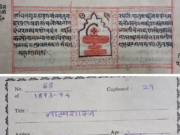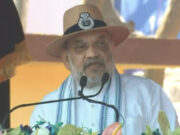
While these traditional channels retain their credibility, the report highlights that social media and influencers are generally perceived as less trustworthy—especially by older and affluent audiences. At the same time, digital media has gained popularity among younger and higher-income rural consumers.
The study found a decline in the usage of platforms like YouTube, WhatsApp and Facebook among rural mobile phone users. However, the adoption of these platforms remains high in the 18-24 age group and those in the NCCS A segment, while significantly lower engagement was observed among the older and lower-income groups.
“As far as credibility is concerned, traditional media benefits from the many years it has been around and the relationship it has built with consumers over time. That kind of trust cannot be replicated overnight, and it’s clearly reflected in the numbers,” said Ajay Mehta, managing director – OOH Solutions, GroupM India, while also highlighting the remarkable pace of digital adoption among rural consumers.
Puneet Avasthi, Director- Specialist Businesses, Insights Division, Kantar India, observed that financially stressed rural consumers are increasingly cutting back on discretionary spending as household costs rise, amid ongoing concerns over persistent inflation and escalating prices.
“What we’ve observed is that the growth in expenditure has significantly outpaced the growth in income. On average, for every additional rupee earned by rural India, expenses have increased by approximately ?1.50,” he said.Avasthi also highlighted a shift in loan preferences, saying more people are borrowing for personal needs while demand for education and commercial loans is declining. He noted that despite financial pressures, consumption across several product categories has grown, with personal care, food, and household cleaning segments showing notable increases.Seven out of ten rural consumers reported engaging with online media sources. Content preferences are also evolving, with growing interest in categories such as health, education, fashion and government-related topics. In contrast, consumption of entertainment content like music and gaming has declined.
Rural India is also seeing broader adoption of digital services. The report pointed to digital payments and e-commerce leading the way. Other services, including education, news and gaming, are seeing steady but more limited uptake, it said.
In terms of shopping behaviour, the report observed that local village shops remain the preferred channel for purchasing groceries and household products. At the same time, online shopping is seeing significant growth, particularly in categories like apparel, which has emerged as the most purchased item online.
While larger e-commerce platforms appear to be losing traction in rural areas, newer shopping apps are gaining popularity. Overall, rural shopping is becoming increasingly convenience-driven, with consumers relying more on a mix of local markets and digital platforms.
The report also noted that confidence in job security has rebounded following a temporary decline, indicating potential for a longer-term recovery. Government welfare initiatives, particularly the PM Garib Kalyan Yojana, continue to play a crucial role, with free ration distribution emerging as the most widely accessed support measure, it said.





































